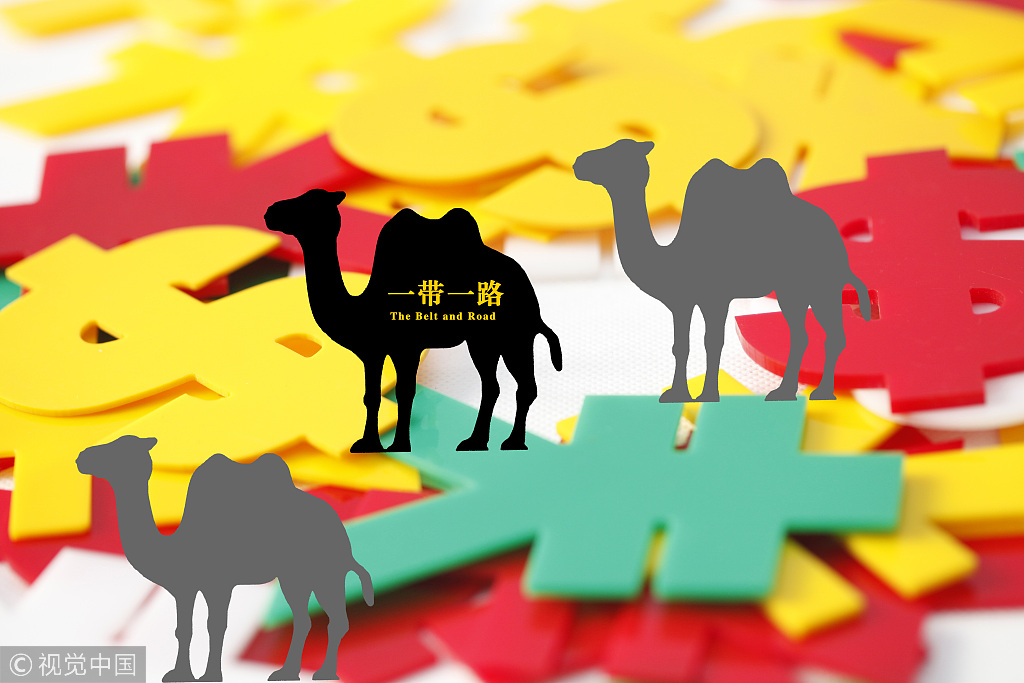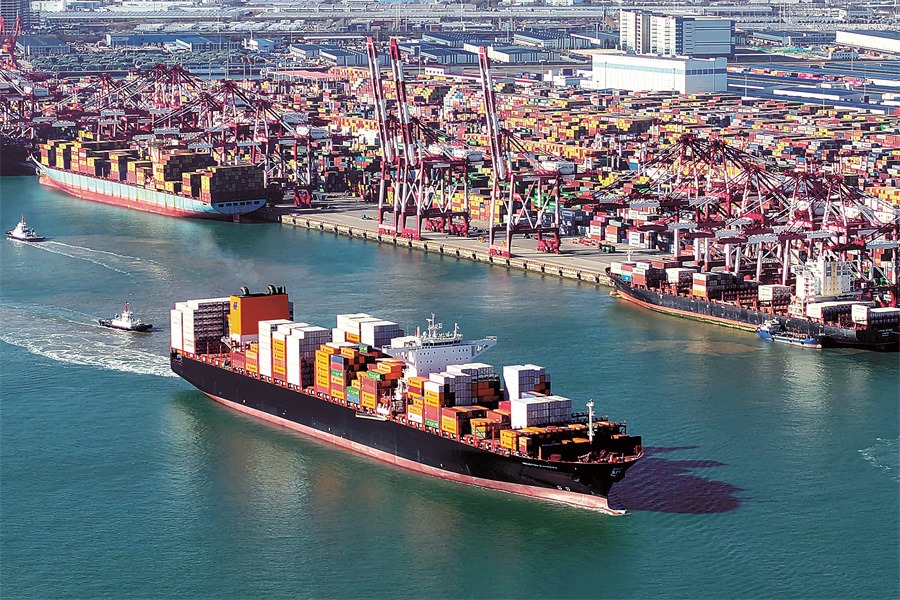Yuan globalization: The world needs a new reserve currency


I thought: hope cannot be said to exist, nor can it be said not to exist. It is just like roads across the earth. For actually the earth had no roads to begin with, but when many men pass one way, a road is made.
-Lu Xun
A new reserve currency for a new Silk Road
For thousands of years the Silk Road was the economic order of the world. However, with the technology of high sea shipping and gunpowder, the overland routes fell into disuse as the sea routes overtook them during the colonial and post-colonial periods of world history. Now with high-speed railways, and modern road and telecom networks, the land routes are coming back.
China's Belt and Road Initiative offers a solution. Sharing China's own development experience, the need for smart infrastructure, connectivity and ecological urban landscapes are aspects to be shared. Moreover, the Silk Road was the economic order of our world for thousands of years, only briefly interfered with by colonialism and post-colonialism when high sea shipping displaced land routes. Now with high-speed rail and road systems, it is time to bring back the golden age of shared prosperity that was once the Silk Road.
The success of this policy, however, will depend greatly upon a new reserve currency for the nations of the new Silk Road.
This benefits the landlocked states, leading to an emerging new world economic order that is both separate, yet parallel to the existing new world economic order, one that can be shared with other aspiring nations of the developing world, or global south. China's own pragmatic, sequenced and alternative approaches to development and economics, places it in a position to lead among nations facing similar challenges and pressures, in forming a parallel world.
In many ways, the Belt and Road Initiative is at the core of this process. Widely misunderstood in the West, it is not a repeat of the Marshall Plan, nor is it about charity, as Western media have characterized it. It is about sharing China's economic experience, or the China solution.
This means development of smart high-speed transport and communication networks, ecological urban spaces, and renewable energy systems, to raise the standards and quality of life for people in the developing nations that are involved in the Belt and Road.
Moreover, reducing income gaps and widening the breadth of prosperity across the developing nations of Central Asia, South Asia, Southeast Asia, Africa and the Middle East will offer a means of enhanced and sustainable security through economic development to address problems at their root and not the symptoms.
This strategy depends on evolving an entirely independent nondollar-based financial structure that can allow for the direct clearing of transboundary payments between the countries of the Belt and Road and China. On a far deeper and a more profound level, the success of the Belt and Road, and regional security of the nations involved, depends on the eventual globalization of the yuan as a reserve currency for the Belt and Road.
The importance of yuan globalization
Key to the success of this process will be the globalization of the yuan currency. Moreover, the establishment of renminbi as a reserve currency for those developing nations – or nations subject to trade sanctions and unfair tariffs – is crucial. These nations will form the new club that will be the new world economic order of our time.
Through the Belt and Road network of nations, the emergence of a new global order, comprising of nations of the developing south whose collective experience and challenges can be overcome through exchanges of experiences, collaborative infrastructure investment and coordinated financial policy.
In this respect, China is offering the China solution, the Belt and Road Initiative, with ecological civilization as the key three policy pillars. Together with India and Russia, it established the New Development Bank (BRICS), and the Asia Infrastructure Investment Bank, as the alternative to the World Bank and International Monetary Fund in constructing this new financial order.
However, key to the success of this is the eventual globalization of the yuan currency and the emergence of the yuan currency as a reserve currency for the global south. That reserve currency can take one of three forms:
-- The yuan as an actual reserve currency.
-- The yuan as a major weighed currency in the basket of currencies of denominated currency that could be issued by the new development bank.
-- A combination of these with the alignment of countries creating a regional Belt and Road currency.
Any of these options are not exclusive of each other and they can all come into play. The key to success for this is that once the yuan is a reserve currency, the ability of any single nation to control global finance will have ended. It would effectively be the liberation of the global south. In the long term, it will be globally stabilizing for all markets by creating diversity and democratization for our financial system.
The history of the yuan's evolution from a highly restricted, fixed currency of an old, State-planned system to its emergence as a potential global reserve currency has and must continue to follow sequenced careful steps. This is a process consistent with China's approach to development, which is gradual, systematic and sustained, rather than a shocking or sudden move. The key game to be played is counterintuitive to Western economic and political mindsets.
Evolving the yuan as the next reserve currency through BRI
The Washington institutions have failed to understand China's gradual economic development policy and the simultaneous adaptation of both planning and market as pragmatic tools to achieve development. Consequently the same institutions insist that China cannot have a reserve currency with the yuan as the global reserve currency unless the currency becomes fully convertible.
However, the process of convertibility will differ, as has China's own development process. For instance, the key here will be to take the yuan currency and globalize it without making it suddenly convertible. How can this be done?
This can be fully achieved through the same gradual approach which China adapted in bringing a market economy into its own socialist economy, merging two types of economic approaches into one, and creating a new economic model, reflecting the characteristics of China's society, culture and geography.
The nature of this process will be to first have immediate or direct agreements with key countries that are part of the Belt and Road network where China's investment in infrastructure is going in a large way, and payments and services can be conducted in renminbi.
China can expand a number of bilateral currency swap agreements across Belt and Road countries with a focus first on those countries bordering China in South Asia, Central Asia and Southeast Asia, and gradually expand the bandwidth through direct currency swaps.
As a result of this, the yuan will naturally globalize without having to be suddenly convertible, because it has controlled convertibility within a band of existing economic alignments and arrangements. These nations will be partners in the Belt and Road Initiative and will have yuan payment requirements, allowing the yuan to circulate directly between China and those countries on a bilateral basis. This avoids currency clearance through the US dollar as an international clearing currency.
By having this direct exchange without having to go through the convertibility process of global financial institutions that run through the bank in New York, China is circumventing altogether the US-dictated processes of currency convertibility and reserve maintenance.
Such globalization of the yuan without sudden convertibility is possible through multiple, bilateral swap agreements, using the currency within a controlled framework and space. This defies all Western economic theories for currency convertibility consistent with China's sequenced development that defied all preconceived theories of economical development previously held by Western institutions and economists.
With China's yuan as the new reserve currency, or a reserve currency for a select group of Belt and Road partner nations, the economic order of our planet will have changed for the better, as the monopoly of one reserve currency will have ended. The geopolitics of our world will have changed as well. And with the new Silk Road, a golden era will be back.
Laurence Brahm is founding director of the Himalayan Consensus Institute and senior international fellow at the Center for China and Globalization.
The opinions expressed here are those of the writer and do not necessarily represent the views of China Daily and China Daily website.


































